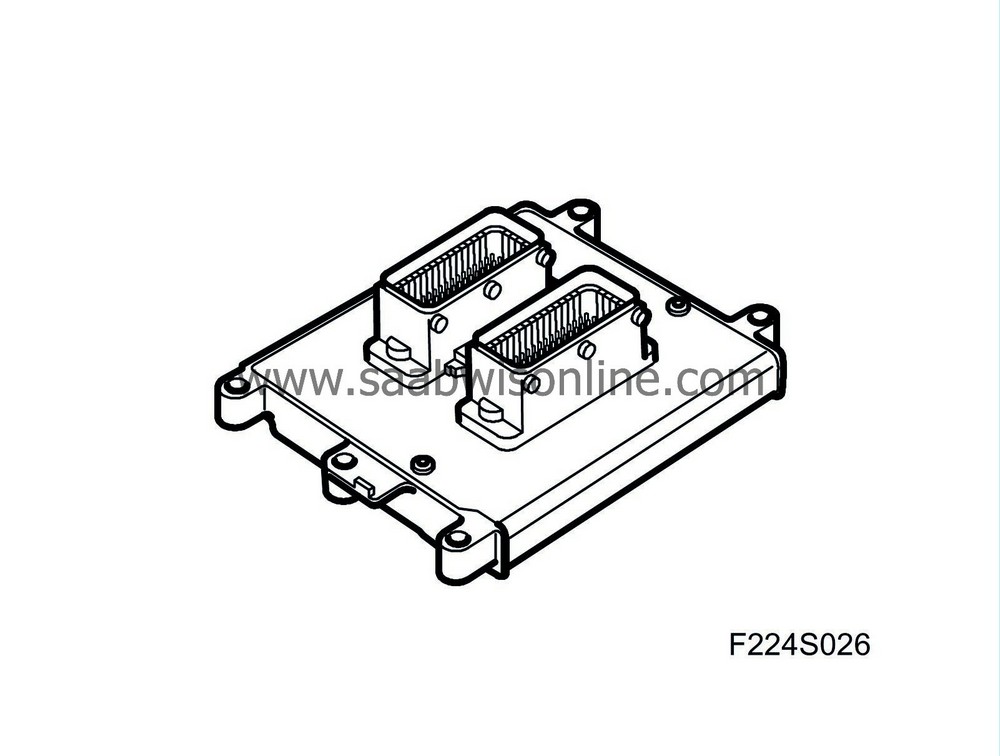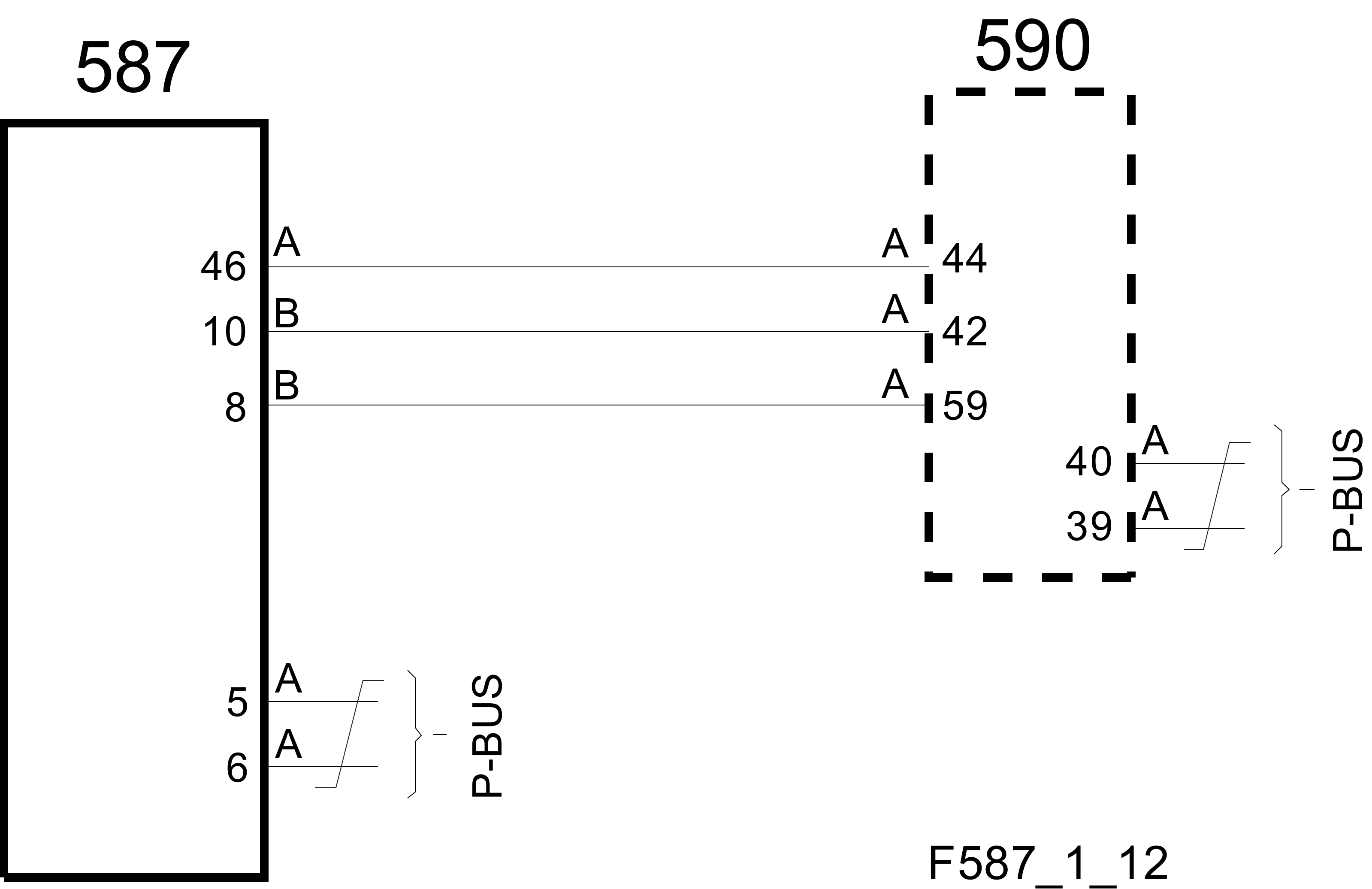PRE-RELEASE
Control module, SCM (587), E39
| Control module, SCM (587), E39 |
A 4-cylinder petrol engine (2.0L Biopower) and 6- speed automatic transmission (AF40-6) from Saab 9-5 has been adapted for mounting in Saab 9-3.
Bus messages have a slightly different structure in the two cars and a converter is required in order to fit the new ECM/TCM control modules. The Signal Conversion Module (SCM) is mounted below the upper radiator beam and is connected to the P-bus. It reads, translates and retransmits messages so that the control modules from both 9-3 and 9-5 platforms understand the content.
SCM has a number of additional tasks to be able to handle the new engine and gearbox.
The SCM hardware is a T8 control module, which after a number of minor adjustments, has been loaded with new software. SCM can be contacted with the diagnostic tool and set its own diagnostic trouble codes for the functions it is responsible for.
Control module, SCM (587), E39
Signal Conversion Module (SCM) is mounted below the upper radiator beam.
Control module, SCM (587), E39
Signal Conversion Module (SCM) communicates with control module, E39 (590).
| Functional Overview |
Cruise control
The cruise control software is different for 9-3 and 9-5. Even the buttons to activate cruise control are different. Here SCM reads data from the 9-3-control module and not only translates, but also create new messages that are compatible with the revised cruise control in 9-5. Conversely, SCM will provide the 9-3-control modules with the messages that they require.Fan control
ECM from 9-5 has two outputs which can be used for fan control. ECM has drive stages that ground the two wires when they are active. For 9-3, three similar outputs are used to give four positions: 00, 01, 10 and 11, which is not enough for four speeds plus fan shutoff.SCM reads the status from ECM for shutoff fan and the first three speeds. A bus message ECM is used for the highest speed. SCM grounds the three wires to the relay box for the radiator fans (706).
| Voltage | Fan off | Stage 1 | Stage 2 | Stage 3 | Stage 4 |
| ECM → SCM Pin B8 | high | high | low | low | low |
| Pin B10 | high | low | high | low | low |
| Bus signal | off | off | off | off | on |
| SCM → Relay box Pin A17 | high | low | high | low | low |
| Pin A33 | high | high | low | low | low |
| Pin A61 | high | high | high | high | low |
Fuel pressure control
SCM controls the fuel pressure from the petrol pump in the tank so that it always corresponds to that requested by ECM via the bus. The pump is driven by a drive stage, which in turn receives information of SCM from pin A51. The output signal from SCM is a PWM on 128Hz where the pulse width controls the final stage's pump current between 0-12A.For SCM to activate the pump also requires ECM to have put B+ on SCM pin A46. SCM uses a three-wire analogue pressure sensor mounted on the pipe between tank and engine to read the actual pressure. The sensor connection appears like this:
| • |
5V supply pin A41
|
|
| • |
Ground pin A18
|
|
| • |
Signal pin A7
The pump's final stage is controlled so that the pressure sensor value corresponds to the requested pressure from ECM. The actual and nominal values can be read with the diagnostic tool. |
|
Charge regulation
Charge regulation aims at charging the battery with optimum voltage to primarily lower fuel consumption. The system enables lower system voltage when the battery's degree of charge is high. The alternator from the 9-5-platform lacks a regulator as is controlled via a PWM-interface from ECM. The logic for charge regulation (regulator) is in BCM for 9-5.The corresponding charge logic is now implemented in SCM. Input data for the function is collected by SCM from BCM, which in turn receives data from the Intelligent Battery Sensor ( IBS) mounted on the battery's negative terminal. The following IBS data is used by SCM:
| • |
Battery voltage
|
|
| • |
Battery current
|
|
| • |
Battery temperature
|
|
| • |
Degree of charge
|
|
The model for calculating charge voltage results in a PWM value as a percentage which is transmitted on the bus by SCM. ECM then adds a 128 Hz PWM with this pulse ratio on the alternator's L-terminal. The pulse ratio varies between 10-90 percent, equivalent to 11.0-15.5 V charge voltage. With this system the voltage varies a great deal.
In winter, directly after a cold start with a cold battery that has a 70 percent degree of charge or lower the voltage can be set to 15.5 V, and when driving with more than a 90 percent degree of charge in the battery the voltage can be 12.4 V for extended periods.
Data conversion
SCM is connected to the P-bus and translates bus data between the older 9-3 platform and ECM/TCM which comes from the newer 9-5- platform. The buses are not separated physically as the bus type is the same. However, the messages have different numbering. Some examples below:| Message | 9-3 Bus frame number: | 9-5 Bus frame number: |
| Start request (from CIM 9-3) | $310 | $1F1 |
| TCS max torque (from ABS 9-3) | $140 | $1C7 |
| Current gear (from TCM 9-5) | $320 | $1F5 |
| Engine speed (from ECM 9-5) | $110 | $0C9 |
From the example above you can see that the start request from CIM is read from message $310 and placed in $1F1 so that ECM can interpret it and activate the starter motor. The engine speed is transmitted on the P-bus by ECM is read from message $0C9 and placed in message $110 so that CIM can interpret it and forward it on the I-bus and MIU shows the speed on the tachometer.


